The week in social: Outcast, Twitter insights, and Facebook GIFs
New live-streaming app Outcast launches for iOS
In an effort to pull together aspects of some of the most popular mobile-focused social networks, Eldar Tuvey has launched Outcast for Apple’s iOS. The basic premise of the application is to do live broadcasting in 15 second bursts, combining ideas of services like Meerkat and Periscope, but limiting the length of content to be distributed in one shot, similar to how Vine, Snapchat, and Instagram video work. In an interesting twist against most other social networks, users can “like” or “dislike” a particular post, something not really seen on Facebook, Instagram, and other networks. Users have to have an account to interact with content, but anyone can view posts. The app does not encourage social interaction, in that users can not follow each other, and content viewed can be filtered only by the overall network stream, and popular posts.

Read more on Social Times.
AMBER Alerts on Facebook are now available in Canada
Earlier this week, Mark Zuckerberg announced that AMBER Alerts that are presently available only in the US on Facebook, would be coming to Canada. AMBER Alerts are the notification system that is in place to help find children when they go missing, with messaging hitting multiple types of media and news distribution services. The same feature of the alerts in the United States will apply in Canada, with the alert highlighting a photo and other information about the child. Users will see these alerts on the screen when they log into Facebook, where previously the system required a manual opt-in, potentially lessening the amount of people who saw each alert.
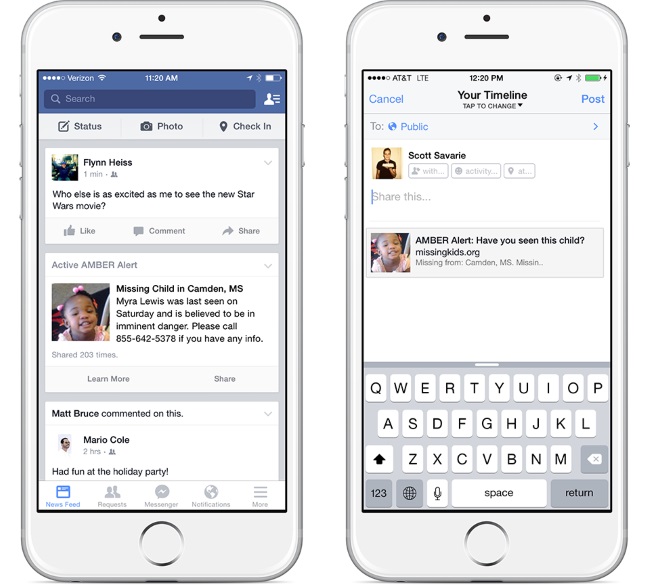
Read more on The Next Web.
Instagram sending users email highlights to showcase best content
In an attempt to possibly lure back inactive users, or highlight the best-in-class content the network’s users produce, some Instagram users are reporting seeing email highlights. The updates include content from users that the account holders follow, provided in the same order as they appear on the app feed, with newest at the top. Based on user reports, there is currently no way to unsubscribe from the service. There has been no official announcement about the change, so it remains to be seen if this will be rolled out to a wider group of users in the near future.
More information on Mashable.
Instagram users also active on many other social networks
Based on research from Global Web Index, users who are active on Instagram are generally also active on half of the top ten other social networks, with almost all active Instagram users also being users of Facebook. Additionally, the top other apps used by active Instagram users were WhatsApp and Facebook Messenger, both owned by Facebook. The other top social applications that Instagram users commonly use come as no surprise, and include Pinterest, Twitter, LinkedIn, YouTube, and more. The data is based off of Q3 and Q4 of 2014, based on Instagram users between the ages of 16 and 64.
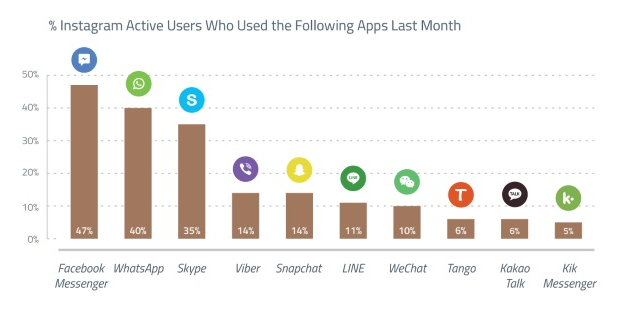
Read more on Social Times.
Facebook is testing adding restaurant reviews to search
Facebook has partnered with a number of publishers that provide restaurant reviews for locations when users run a search for a place to eat. New York Magazine, and the San Francisco Chronicle are among the partners, and the intent is to provide higher quality content aligned to what a user is searching for. The critical reviews of the restaurants will be displayed in the feed of results next to other results for the business including news, a page listing if it exists, and more. An overview of the review will appear in the result listing, and users can click through for the entire review.
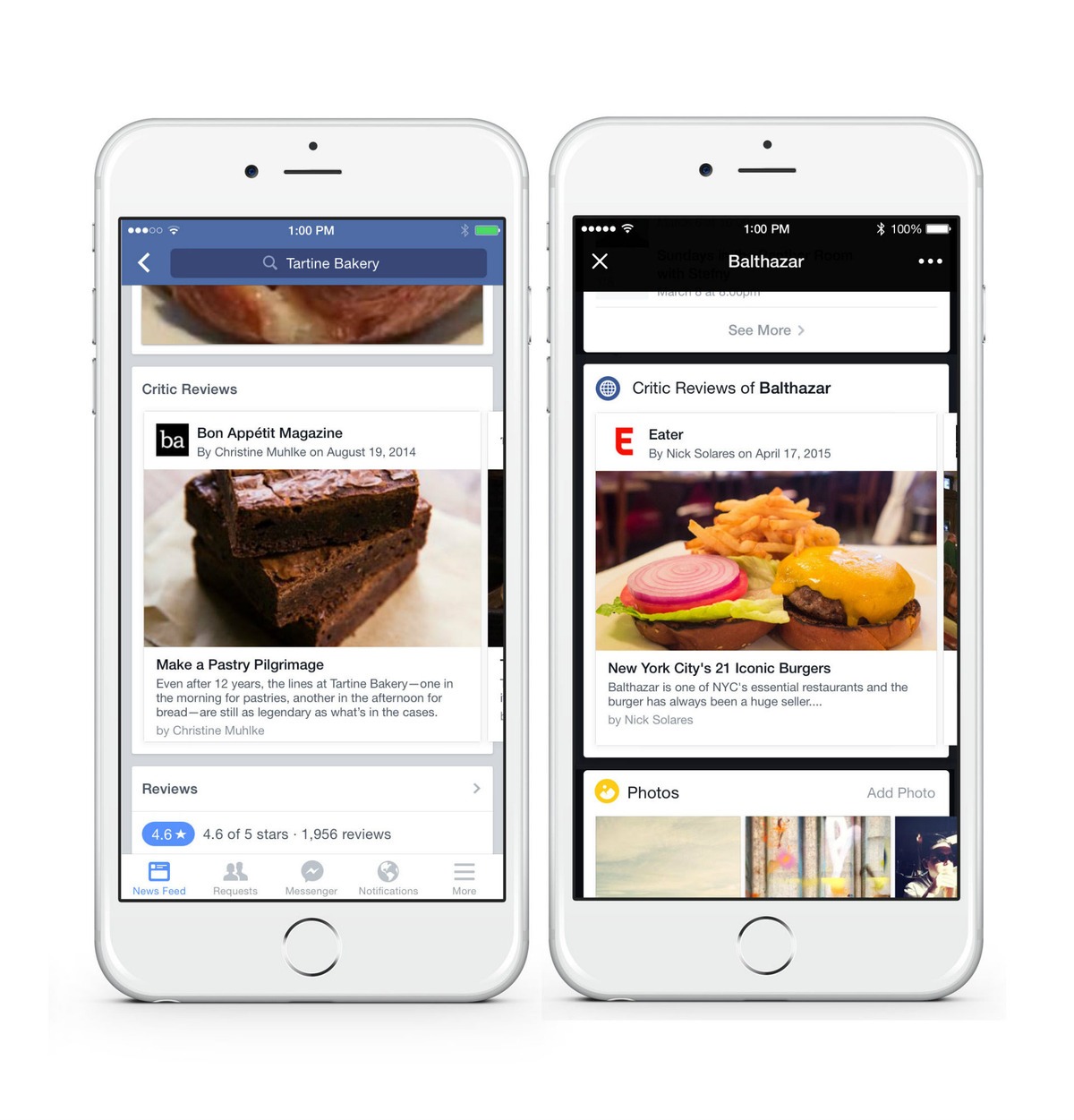
Read more on Mashable.
Periscope launches for Android devices
While its competitor Meerkat launched its service for Android much earlier, Periscope, the native Twitter live-streaming social network has just been launched for Android as of earlier this week. Devices running Android KitKat 4.4 and higher are able to use the service, and users can download it directly from the Google Play store.
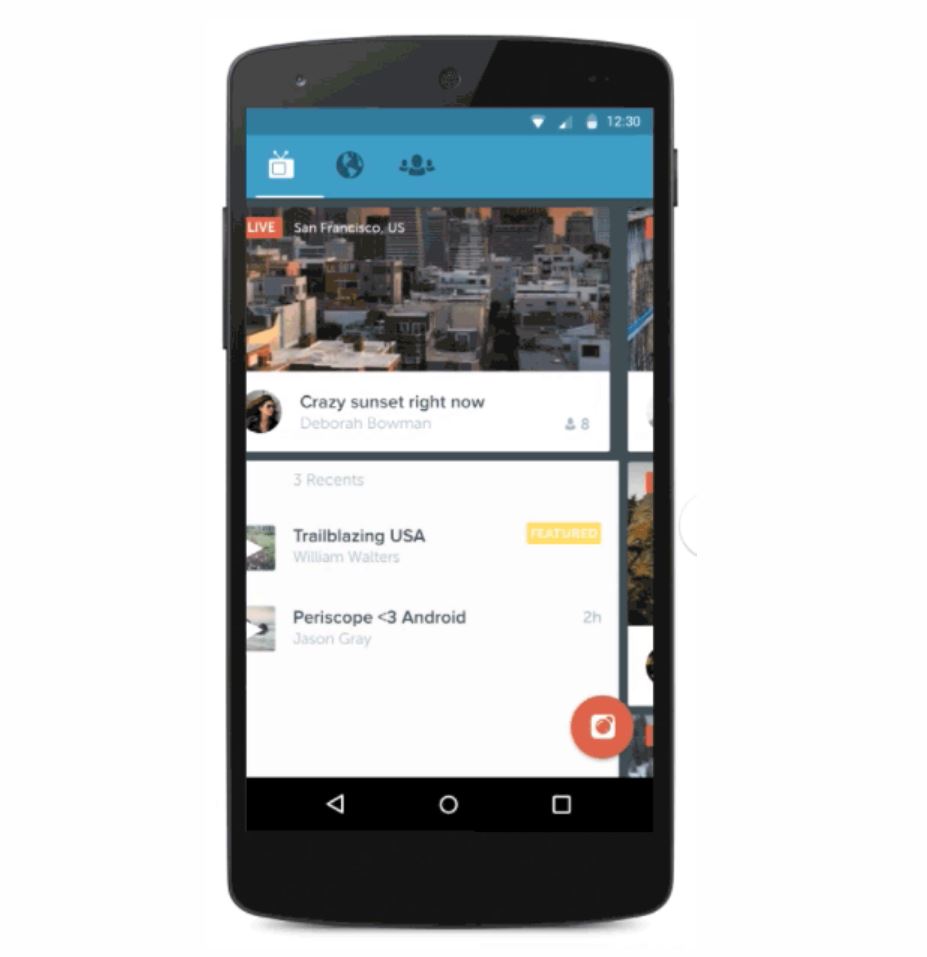
Read more on Twitter Blog.
Facebook updates its payments feature on the Messenger app
Facebook has announced changes to the way its payments service works on the Messenger app for all users. Previously, where users could click on a dollar sign option to start a peer to peer payment, now clicking this button hyperlinks all dollar signs in the message stream, and the sender confirms before an actual amount of money is sent to a user. The hyperlinking of dollar amounts is the same as it is for addresses, websites, and phone numbers. The service has also been made more seamless as users can pay a user in a group conversation without having to open up a separate conversation with that single user. In terms of geography, the payments service was previously limited to cities such as Seattle, Portland, and Austin, and is now available in New York City. The payments service faces competition from incumbents such as PayPal and Venmo.
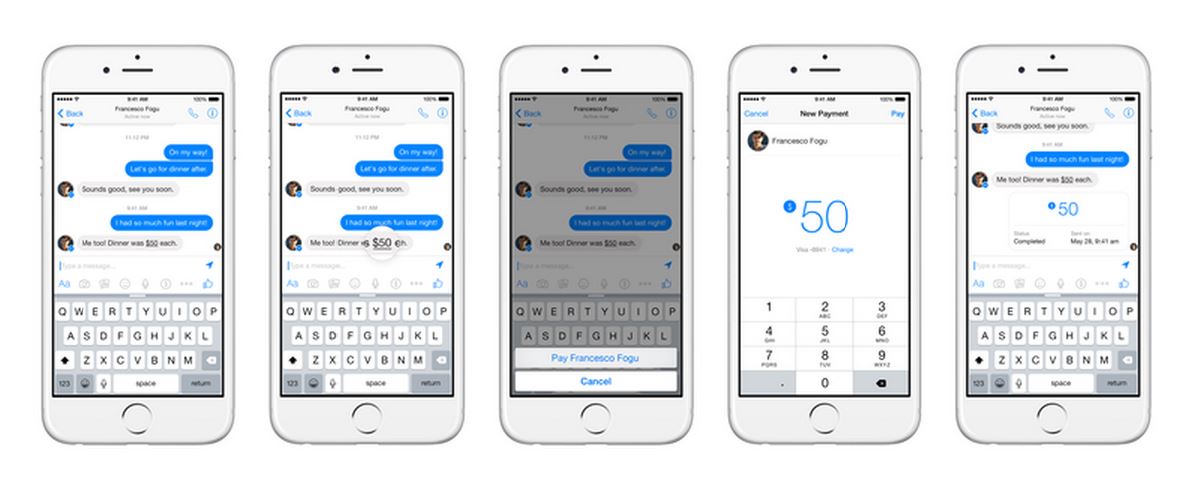
Read more on CNet.
Instagram to bring carousel ads to new international markets
Starting on Monday, June 1st, Instagram will be bringing its new format of carousel ads to several new international markets; the UK, Canada, Australia, France, Germany, and Brazil. Instagram’s carousel ads work by having users swipe to the side to see more images horizontally from a similar brand, as opposed to the way the normal feed works by scrolling vertically through content posted from users. The advantage of this type of ad is said to be that it gives brands and businesses the ability to tell a story through multiple images, and advertisers can feature a link to a website on the images.
More information on PR Week.
Facebook testing new menu display options
Taking a cue from the social network Path, Facebook is testing a new option to display its menus for posting content on its mobile app. Previously on the bottom bar of the app, users would see a shortcut to the stand-alone Messenger app, but now some are seeing a “post” button, which when tapped, quickly opens up an array of sub-options, like checking-in, uploading a photo, or uploading a video. Not all users have access to the feature, and there is no confirmation on whether or not it will see wider adoption, although Facebook did officially confirm the test.
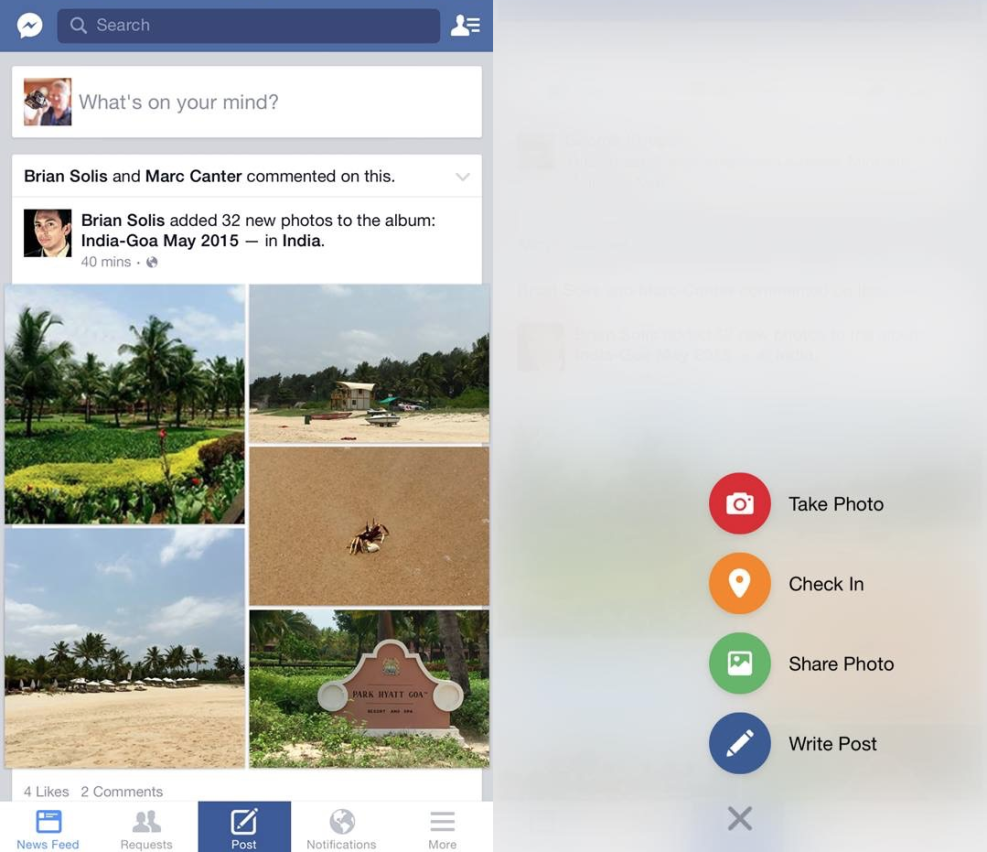
Read more on TechCrunch.
Facebook officially rolls out GIF support
While many are considering Facebook to be late to the party for its latest update, the company is finally adding official limited support for the upload of .gif format image files, or animated GIFs as they are more commonly known. Previously, there were a few workarounds for getting a GIF to work on Facebook, including using a 3rd party service called Giphy, but now GIFs uploaded from many other sites will work as well. In order to use this new feature, users just have to copy the link from where a GIF image is hosted and paste it into their status, where the image will then appear in-line in the Facebook feed. The feature will not work with direct image file uploads to Facebook.
More information on The Verge.
Pinterest introduces Ambassadors
As a way of putting faces to the popular pin-sharing social network, Pinterest has introduced its first batch of ambassadors, personalities sponsored by the network that create specific types of content. Based on a recent blog post from the company, the ambassadors will be holding meetups and demos, in an effort to help people learn how to use the network in more creative ways. The first set of ambassadors hail from the United States, and there is no indication of other things to come, but each of the individuals presented on the website are from different locations with unique interests.
More information on Pinterest Blog.
Twitter debuts audience insights dashboard
Twitter has introduced a new dashboard for account holders that will allow them to learn more details about the users following them, and those engaging with their organic tweets. Called Audience Insights, the new service provides details such as demographics, interests, lifestyle choices, and purchasing behavior. The dashboard is currently available to all Twitter Analytics users and Twitter Ads users, and the service is available in the US, with plans to roll it out further in the near future. To protect user data, all information is aggregated and remains private, with data being combined from Twitter and its Marketing Platform Partners.
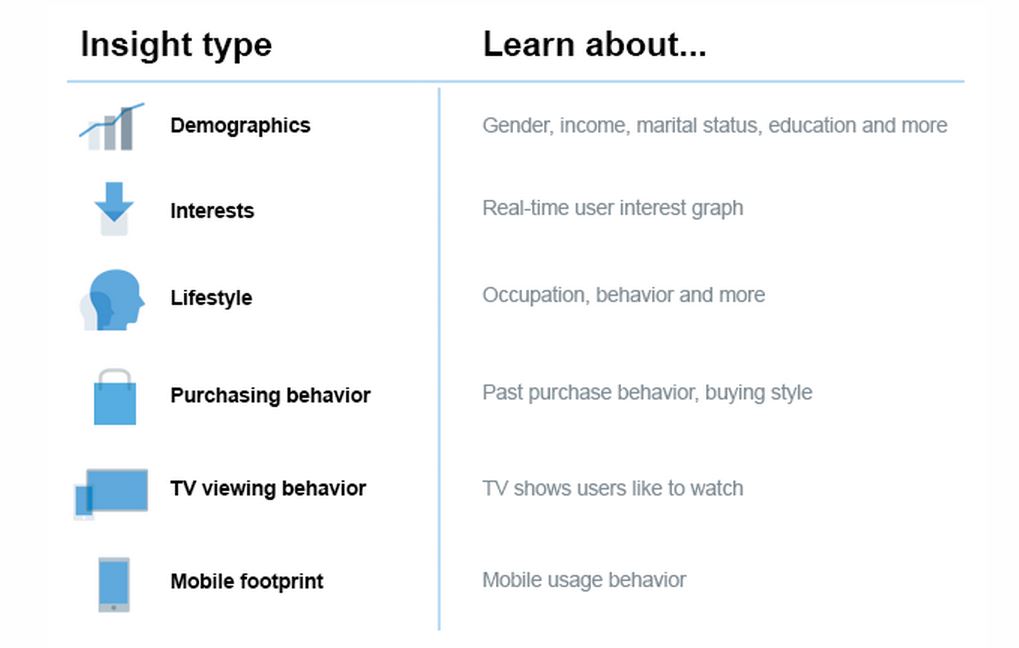
Read more on Twitter Blog.